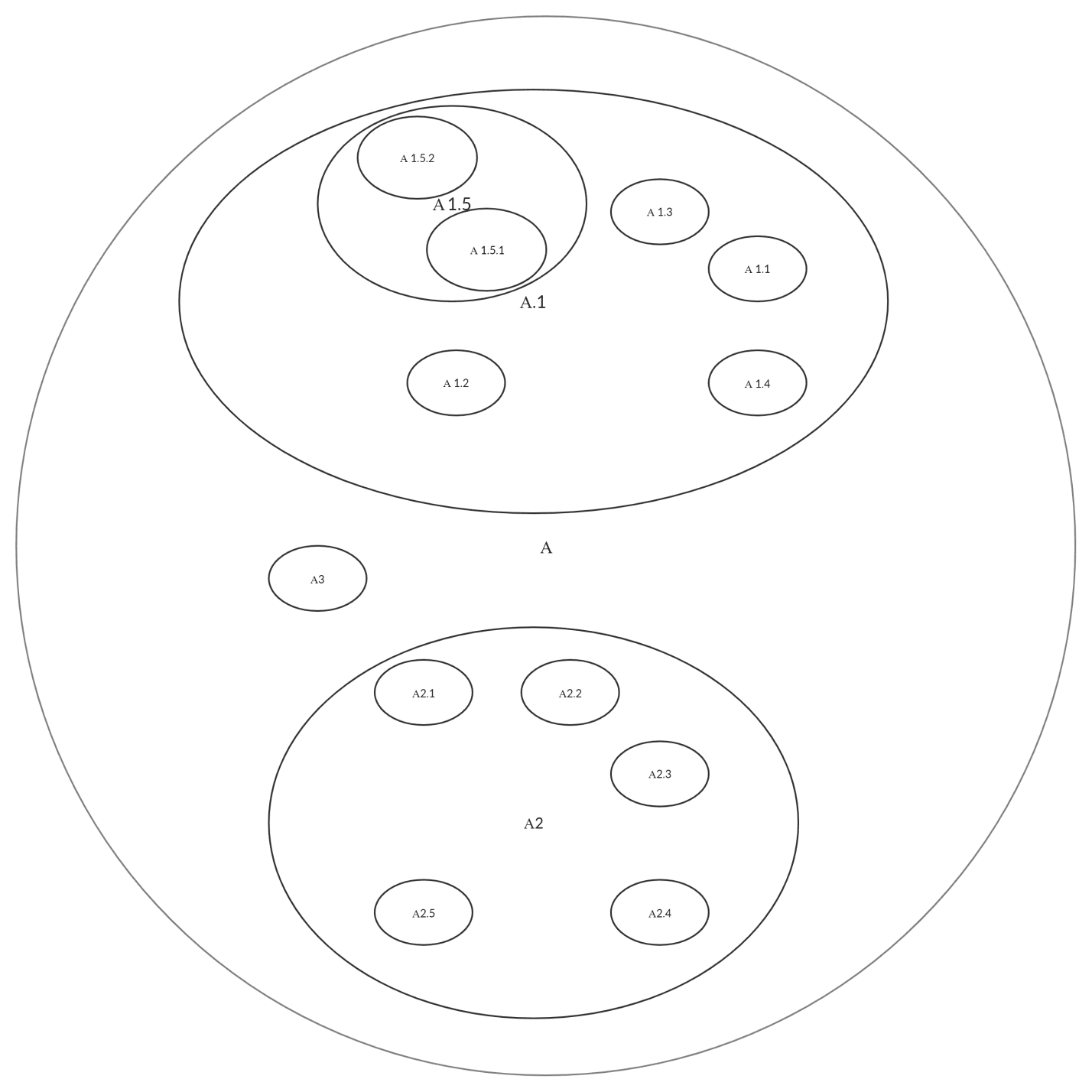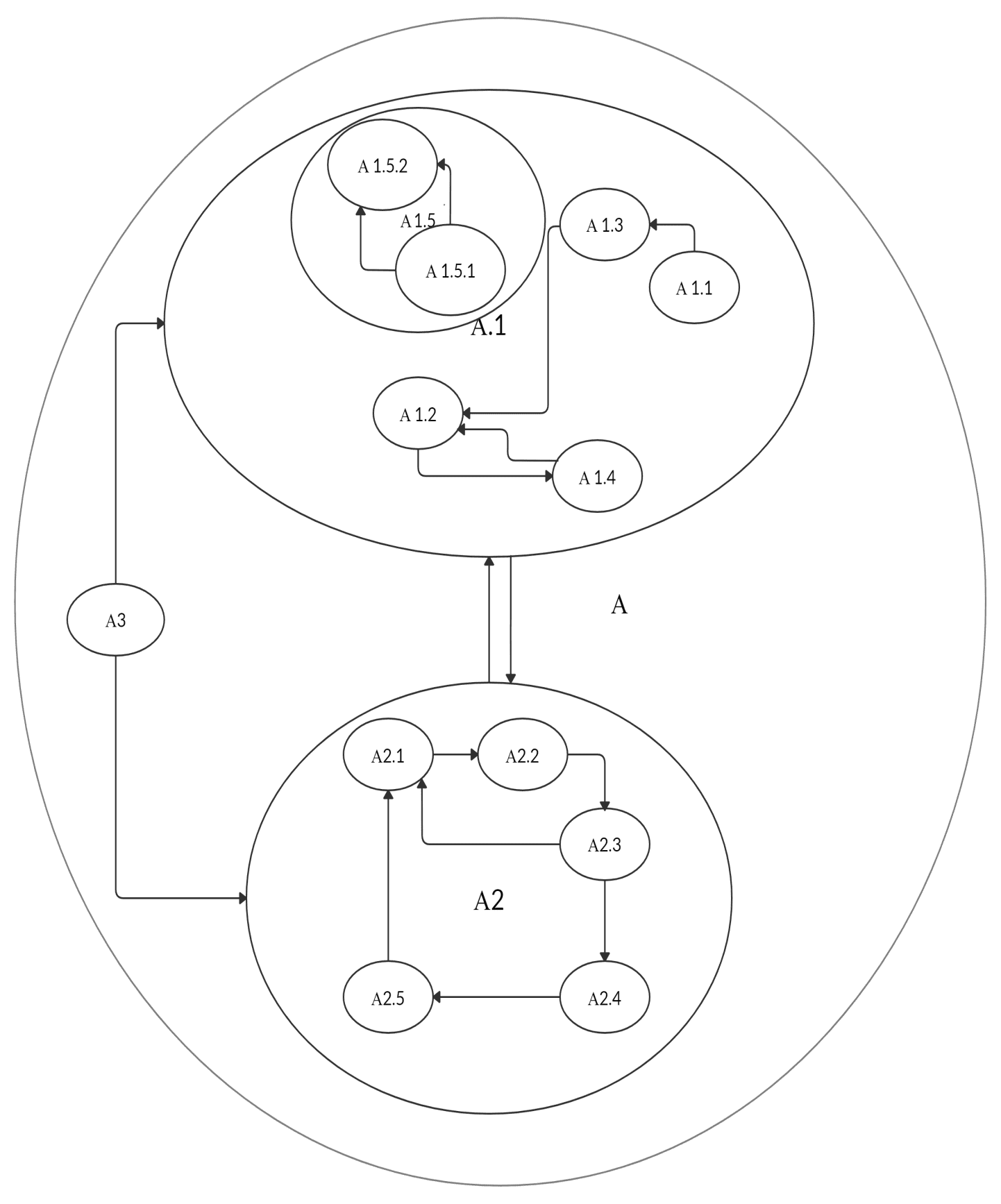Abstract
Content
- INTRODUCTION
- 1. VERBAL SYSTEM MODEL
- 1.1 Subject form of system description
- 1.2 Functional form of the system description
- 2 MORPHOLOGICAL MODEL OF THE SYSTEM
- 2.1 Organizational Chart
- 2.2 Black box model
- 2.3 Composition and structure model
- CONCLUSION
- List of sources
Introduction
Production plan an integral part of any business plan, which should describe all production or other work processes of the company. Here it is necessary to consider all issues related to production facilities, their location, equipment and personnel, and also pay attention to the planned involvement of subcontractors. Attention should also be paid to the location of production facilities and the placement of tools, equipment and jobs. Delivery times should be indicated and major suppliers listed. Describes how quickly the firm can increase or decrease the output of goods or the provision of services. An important element of the production plan is also a description of the company's requirements for quality control at all stages of the production process.
The main method of developing plans is balance sheet. It consists in comparing the needs and availability of material, technical, labor and financial resources and, in the absence of equilibrium, determining the sources of their coverage to achieve the intended goals. At the enterprise level, the balance method makes it possible to judge the available production capacities of the enterprise, their dynamics in the forecast period, the degree of utilization, plan the release of goods in marketing monitoring, etc.
A significant place in the development of plans is occupied by the method of technical calculation planning. It is used in calculating the economic efficiency of production, investment, profitability of securities, attracted credit resources. This method is based on a system of norms. In this case, the following groups of norms are used: fixed production assets; working capital; labor costs and labor intensity of products; norms for the implementation of production processes; product quality standards; specific rates of capital costs, rates of return on capital costs, etc .; norms of production and circulation costs, norms of economic management.
In the practice of planning, they also apply: 1) the method of system analysis and synthesis; 2) expert (evaluative) or heuristic; 3) economic and mathematical methods and models. The specificity of the first consists in the decomposition of economic systems and the processes occurring in them into their component parts and, on this basis, determination of the leading links, bottlenecks, and key production problems. The second method involves finding out the opinion of experts – experts on the merits of any planning problem. Such methods of organizing the work of experts as: "brainstorming", Delphi
, Patiria
etc. are widely known. The third method includes the use of linear programming models (drawing up a program of output for given labor and material resources, optimal equipment load) and information technology functionality for managing production, costs and finances.
The normative method of developing and substantiating plans, as well as regulating production activities through norms and standards, has become widespread in planning practice. When developing them, it is necessary to take into account the current level of development of science, technology, technology for organizing production and labor; make the best use of production facilities and focus on the best practices of the most successful enterprises.
The main modern method of developing standards – calculation and analytical, in which the norms and standards are technically justified by a comprehensive critical analysis of the state of production, possible changes in it, studying the influence of various factors. The standards are based on technical, economic and organizational conditions of work in the planning period.
1. VERBAL SYSTEM MODEL
Verbal model – information model in mental or spoken form. These are models obtained as a result of deliberation, inferences. They can remain mental or be expressed verbally.
Production of PVC fittings – it is the production of PVC products for pressure water supply systems and gravity sewerage systems. All fittings comply with national standards for pressure supply and drainage. Fitting for PVC systems allows you to connect plastic pipes into a socket using O-rings without the use of special equipment. [ 1 ]
1.1 Subject form of system description
The purpose of PVC fittings production is to manufacture and sell fittings.
Structural analysis showed that a PVC fittings manufacturing enterprise consists of: server room, production department, warehouse, accounting, security department and director's administration.
To conclude a contract for the purchase of a fitting, you must contact the director of the plant or with a person authorized to conclude contracts for the sale of goods. You can also familiarize yourself with the price list and consult on the purchase of goods directly on the website of this plant.
1.2 Functional form of the system description
The functional form of the system description consists of a definition of internal and external functioning.
The internal functioning of the PVC fittings production plant is the production and storage of products.
External functioning consists of drawing up a purchase and sale agreement with suppliers and buyers.
2 MORPHOLOGICAL MODEL OF THE SYSTEM
In the course of system analysis, a morphological model was developed, which is a combination of the following models: black box model, system composition model, system structure model. [ 2 ]
2.1 Organizational structure
The main divisions that determine the organizational structure of the enterprise are highlighted:
– Director's administration – provides control and management of all structural units;
– Server – responsible for the functioning of the site, generates information about orders;
– Security department – keeps order at the enterprise;
– Accounting – carries out financial accounting at the enterprise, the development of a production plan;
– Sales department – ensures the commercial activities of the enterprise for the sale of products, drawing up plans for the supply of products in accordance with orders;
– Purchasing department – determines the need for raw materials and supplies, establishes the most rational forms of supply, purchases raw materials and materials for production;
– Production department – ensures product release;
– Warehouse – responsible for the storage of raw materials, materials and finished products.
2.2 The black box
model
The system, which is represented as a black box
, is considered as having a certain input
for entering information and an "output" for displaying the results of work, while the processes occurring during the operation of the system unknown to the observer [ 3 , 4 ].
As an external environment for the system Production of PVC fittings
are:
– buyers;
– suppliers;
– state.
The inputs to the PVC Fittings Manufacturing
system are:
X1 – raw materials;
X2 – finance;
X3 – legislative acts regulating the activities of the enterprise.
Outputs of the PVC fittings production
system include:
Y1 – products;
Y2 – finance.
Based on the verbal model, a formal composition model has been developed, which includes:
A1 – Administrative department;
A1.1 – Server;
A1.2 – Accounting;
A1.3 – Sales department;
A1.4 – Purchasing department;
A1.5 – Director's administration;
A1.5.1 – Director;
A1.5.2 – Secretary;
A2 – Production department;
A2.1 – Technical department;
A2.2 – Assembly shop;
A2.3 – Design department;
A2.4 – Technical control department;
A2.5 – Warehouse;
A3 – Security department.
2.3 Composition and structure model
Figure 2.1 – 2.2 shows the composition model and the relationship between the elements of the system structure.
Let's denote Y
, in the model of the structure of the system Production of PVC fittings
, connections between subsystems: server room, accounting, household. staff, security room, director's administration, director, secretary, sales department, purchasing department, warehouse[5, 6, 7].

Figure 2.1 – Squad model
The structure model was derived from the composition model by establishing inter-element relationships:
Y1 – 2 – the administration department sends instructions to the production department;
У1.1 – 1.3 – the server sends information about orders to the sales department;
Y1.2 – 1.5 – the accounting department transfers information about the work to the director's administration;
Y1.2 – 1.4 – the accounting department sends information about the allocation of funds for the purchase of materials;
Y1.3 – 1.2 – the sales department transfers information about the work to the accounting department;
Y1.4 – 1.2 – the purchasing department transfers information about the work to the accounting department;
Y1.5 – 1.2 – the director's administration sends instructions to the accounting department;
Y1.5.1 – 1.5.2 – the director sends instructions to the secretary;
Y1.5.2 – 1.5.1 – the secretary transfers information to the director;
У2 – 1 – the production department transfers information to the administration department;
Y2.1 – 2.2 – those. the department transfers information to the assembly department;
Y2.2 – 2.3 – the assembly department transfers the products to the design department;
Y2.3 – 2.4 – the design department transfers the products to the technical department. control;
Y2.3 – 2.1 – the design department transmits instructions in accordance with the production plan in those. department;
Y2.4 – 2.5 – department of those. control transfers the products to the warehouse;
Y2.5 – 2.1 – warehouse supplies materials to those. department;
Y3 – 1 – the security department oversees the administrative department;
Y3 – 2 – the security department oversees the production department.
The matrix representation of the system structure model PVC fittings production
is shown in Figure 2.5.

Figure 2.2 – Structure Model
CONCLUSION
In the course of the study, a formalized model of the enterprise was developed for an enterprise for the production of PVC fittings, an organizational structure and a morphological model were presented. System analysis showed that planning plays a special role in management – the process by which the system uses its capabilities to change external and internal conditions. It is the most dynamic function and is used to build a solid foundation for other management activities.
The purpose of the planning function is to create a coherent decision-making system that improves the performance of an organization. In this regard, in order to increase the efficiency of the production of PVC fittings, it is necessary to conduct a study of methods for constructing a production plan.
Список источников
- Рыков, А.С. Модели и методы системного анализа: принятие решений и оптимизация / А.С. Рыков – М. : МИССИС, 2005. – 352 с.
- Агафонов, В.А. Системный анализ в стратегическом управлении / В.А. Агафонов. – М. : Русайнс, 2016. – 48 c.
- Козлов, В.Н. Системный анализ, оптимизация и принятие решений / В.Н. Козлов. – М. : Проспект, 2016. – 176 c.
- Бабаскин, С.Я. Инновационный проект: методы отбора и инструменты анализа рисков: Учебное пособие / С.Я. Бабаскин. – М. : ИД Дело РАНХиГС, 2013. – 240 c.
- Батаев, В.А. Методы структурного анализа материалов и контроля качества деталей / В.А. Батаев. – М. : Флинта, 2007. – 224 c.
- Баринов, В.А. Теория систем и системный анализ в управлении организациями: Справочник: Учебное пособие / В.А. Баринов, Л.С. Болотова; Под ред. В.Н. Волкова, А.А. Емельянов – М.: ФиС, ИНФРА-М, 2012. – 848 c.
- Лёвкин А.В. Системный анализ предприятия по производству поливинилхлоридных фитингов. / А.В. Лёвкин, И.А. Тарасова // Материалы студенческой секции XI Международной научно-технической конференции Информатика, управляющие системы, математическое и компьютерное моделирование (ИУСМКМ – 2020). – Донецк: ДОННТУ, 2020. – С. 548-551.
